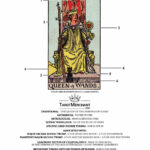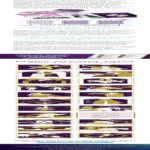In the unfolding tapestry of life, the enigmatic art of tarot serves not merely as a tool for divination but as a mirror reflecting the depths of the human spirit. Contemporary interest in tarot, particularly within a Christian framework, beckons one to explore its depths. How can we reconcile the intricate dance of tarot’s symbolism with the steadfast teachings of Christianity? This question might very well set the stage for a profound journey into understanding the present energies, hidden influences, and personal guidance that tarot can offer.
At the core of tarot is the understanding that each card embodies a spectrum of meanings, intricately tied to the life experiences of individuals. The present energy card reveals the current circumstances and emotional state of an individual. For instance, drawing the Fool can signify a fresh start, a leap of faith into the unknown. In this precise moment, one might explore their connection with God, contemplating whether they are ready to embrace the uncertainties of life with faith akin to that exemplified by the scripture, “For we walk by faith, not by sight” (2 Corinthians 5:7).
Conversely, the Death card, often misinterpreted, suggests transformation rather than a literal end. This card encourages individuals to accept change, reminiscent of biblical teachings that herald the necessity of rebirth. In John 3:3, it’s written that “No one can see the kingdom of God unless they are born again,” suggesting that transformation is a divine mechanism for growth.
Next, we contemplate the hidden influences that subtly shape our journeys. Each tarot card holds the power to unveil aspects of ourselves that often lie dormant. Drawing the High Priestess, for example, calls attention to the subconscious wisdom residing within. This card encourages reflection, akin to the proverb from Proverbs 3:5 that admonishes believers to “Trust in the Lord with all your heart and lean not on your own understanding.” In this context, the High Priestess invites individuals to seek divine guidance over their internal struggles.
Hidden influences often encompass underlying motives, past actions, or unaddressed anxieties. The Moon card, typically associated with illusion and intuition, invites one to delve deep into the psyche. This prompts the question: Are you embracing, or are you afraid of your inner truths? It beckons a Christian follower to wrestle with the shadows, mirroring the biblical narrative wherein many heroes of faith faced doubt and fear. Just as David poured out his soul in the Psalms, we are urged to confront our innermost thoughts.
Having delineated the present energies and hidden influences, one must then seek guidance. This guiding principle resonates profoundly as we transition to the final card in our spread, representative of the wisdom to act upon the energies and insights gleaned from the previous cards. The Judgment card calls for evaluation and rebirth. How does one reconcile the guidance presented by the universe with Christian values and doctrines? This card, aligned with the biblical concept of ‘calling’ or ‘vocation,’ encourages believers to heed their spiritual awakenings and rise to their divine purpose.
Every tarot reading encourages active engagement with one’s faith. It poses an invitation to examine current pathways, confront hidden fears, and respond to personal growth opportunities, all while remaining grounded in the principles of Christianity. Furthermore, the challenge remains: can one allow the cards to illuminate their spiritual journey without compromising their beliefs? This juxtaposition of tarot and Christian perspective can be indeed challenging, yet enriching, for the soul.
To navigate this challenge effectively, one must adopt an open heart and a discerning spirit. Embrace the playful metaphors inherent in tarot while rooting oneself in prayer and scriptural wisdom. This dual engagement allows for a fuller understanding of life’s complexities and can enrich one’s relationship with God. Reflect on the materials mentioned and inquire, “How does my interpretation of this card advance my spiritual journey?”
Ultimately, the guidance from the tarot can serve as a catalyst for deeper introspection. Rather than viewing it solely as a fortune-telling medium, consider it a dialogue with the divine. Each card can parlay invaluable insights into life’s pressing questions and hurdles, encouraging believers to align their actions and decisions with the larger narrative of their spiritual lives.
In conclusion, aligning tarot with a Christian perspective offers a fertile ground for exploration. The present energy reveals insights into one’s emotional landscape, while hidden influences challenge individuals to confront their inner selves. Finally, the guidance spread encapsulates the essence of the call to act, reminiscent of biblical admonitions to be proactive in faith. The real journey lies not just in the cards drawn, but in the reflection that follows. Are you prepared to embrace this multi-dimensional narrative and the possibilities that lie ahead?








Leave a Comment